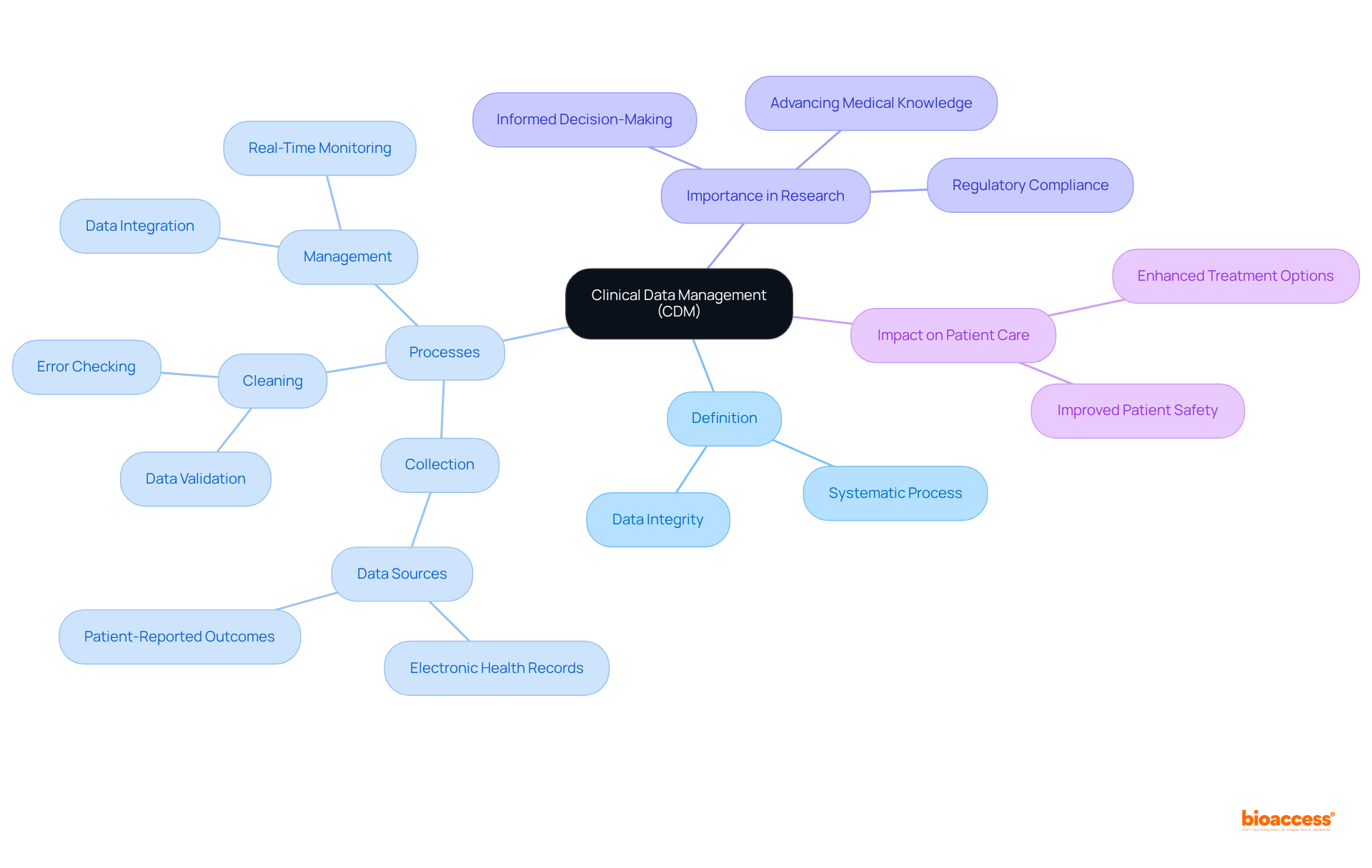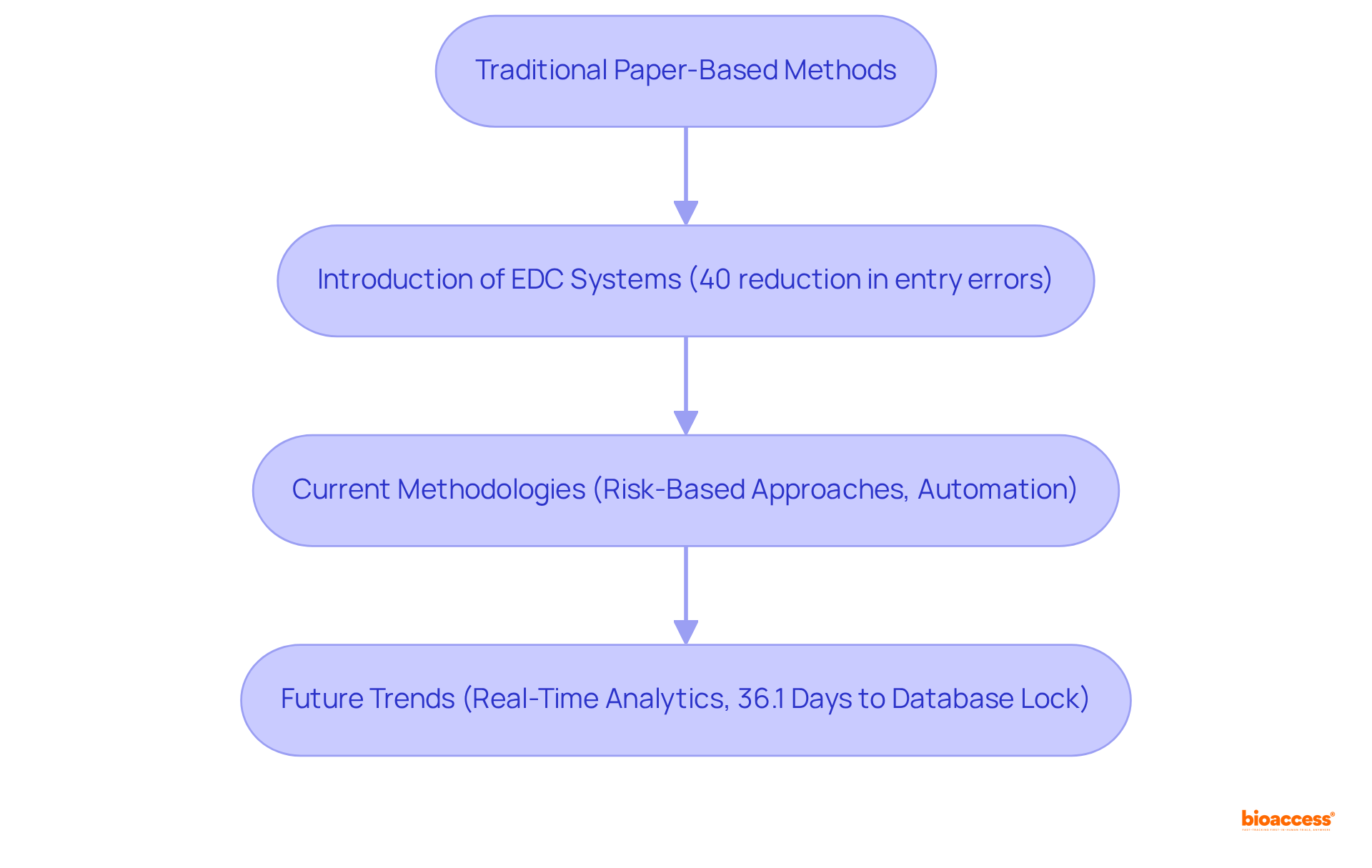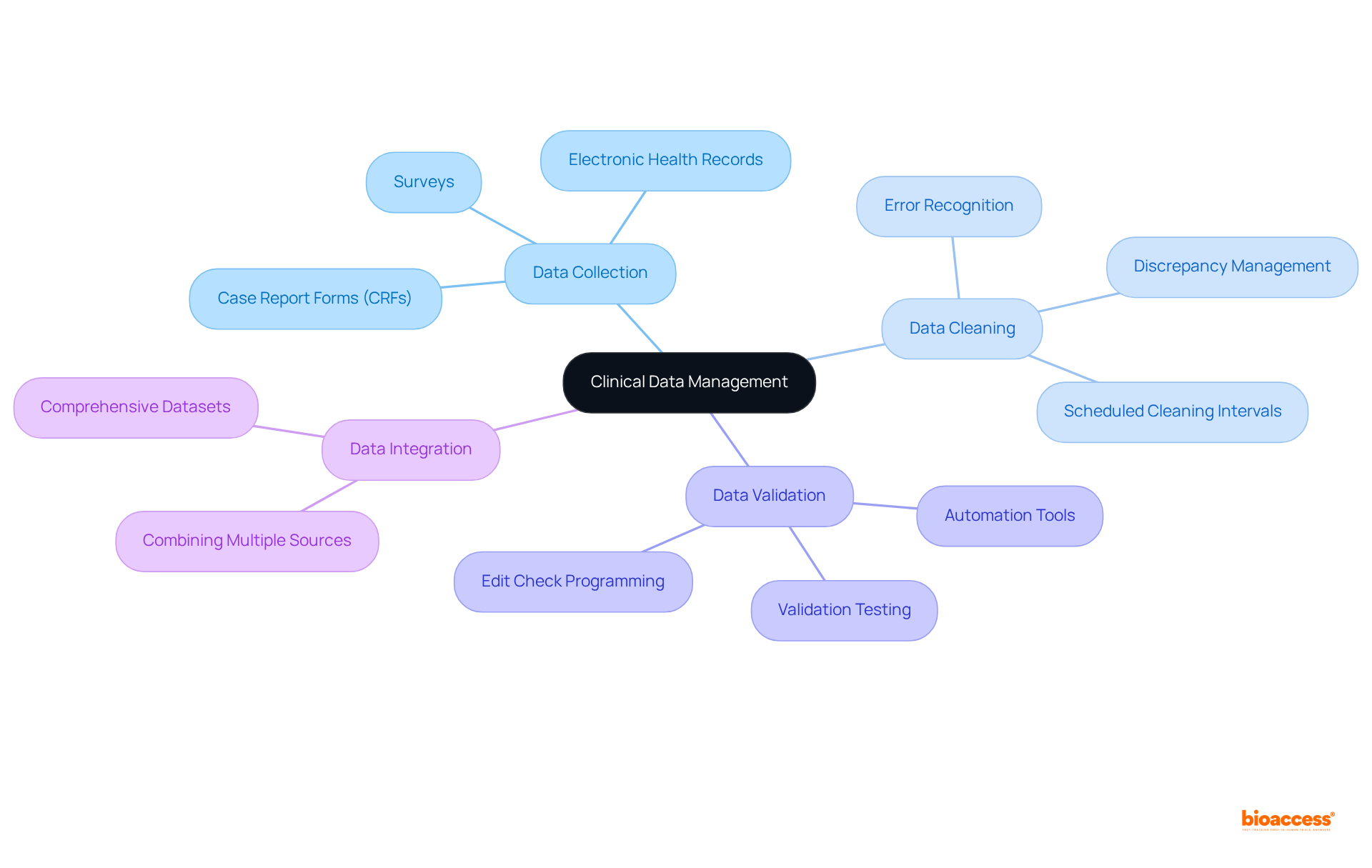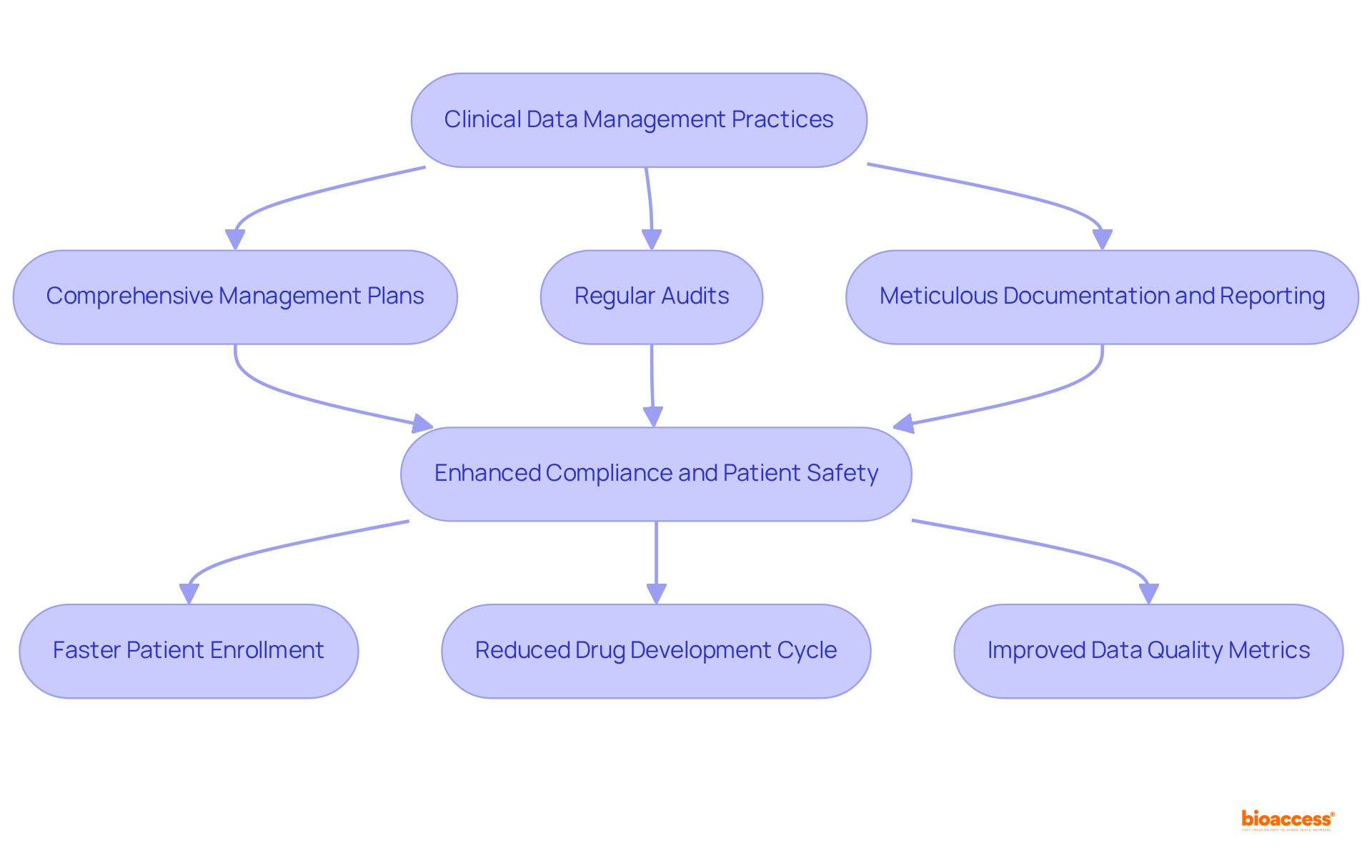


Clinical Data Management (CDM) represents a systematic process that guarantees the precise collection, cleaning, and management of data generated during clinical trials. This process is essential for making informed decisions regarding new treatments. Effective CDM practices not only enhance compliance with regulatory standards but also safeguard patient safety and bolster research credibility. Such improvements ultimately accelerate drug development and increase the likelihood of regulatory approval.
Clinical data management (CDM) serves as the backbone of clinical research, ensuring that the substantial amounts of data generated during trials are not only accurate but also reliable and primed for analysis. As the landscape of medical research evolves, the significance of effective CDM practices becomes increasingly evident. These practices empower organizations to enhance patient safety while expediting the development of new therapies. However, with the escalating complexity of clinical studies and the stringent demands of regulatory compliance, organizations are faced with the critical question: how can they effectively navigate the challenges of data management to achieve both compliance and quality?
Clinical-data-management (CDM) is a systematic process essential for the collection, cleaning, and management of information generated during clinical trials. This process not only guarantees the accuracy and reliability of data but also ensures that it is meticulously prepared for analysis. Such precision is essential for making informed decisions regarding new treatments and therapies.
Clinical-data-management (CDM) stands at the forefront of research, ensuring the integrity of information while adhering to stringent regulatory standards. By doing so, it plays a vital role in advancing medical knowledge and enhancing patient care.

The evolution of clinical-data-management commenced with traditional paper-based methods, which were often cumbersome and error-prone. The advent of electronic information capture (EDC) systems marked a pivotal transformation, facilitating faster and more accurate data collection. This transition not only streamlined processes but also bolstered information integrity, evidenced by a 40% reduction in entry errors observed in Phase III oncology studies utilizing EDC solutions.
Over the years, CDM has matured into a sophisticated domain that integrates information science and analytics, significantly enhancing the quality and efficiency of research studies. Current methodologies highlight risk-based approaches and automation, reflecting the industry's necessity for agility in a swiftly changing research landscape. Notably, 84% of research sites have either transitioned to paperless systems or plan to do so, underscoring the widespread adoption of EDC technologies.
The advancement of information gathering techniques has also been influenced by the increasing complexity of clinical studies. Late-stage protocols now generate an average of 3.6 million data points—threefold the amount from 15 years ago. This surge in data volume necessitates robust clinical-data-management strategies that are capable of effectively managing and analyzing vast quantities of information. As organizations continue to embrace EDC systems, the focus on integrating advanced features, such as real-time information analytics and automated query resolution, is expected to further enhance study efficiency and regulatory compliance. Additionally, the average duration from the last patient visit to database lock currently stands at 36.1 days, showcasing the efficiency of EDC systems compared to traditional methods. As Clive Humby astutely noted, 'Information is the new oil,' emphasizing the crucial role of information in modern clinical studies. Furthermore, case studies, such as 'Electronic Data Capture in Clinical Studies,' illustrate the tangible benefits of EDC systems in optimizing study processes and outcomes.

Key components of Clinical Information Management (CDM) encompass collection, cleaning, validation, and integration. Understanding these elements is crucial for the systematic management of information throughout the clinical study lifecycle, which is where a Data Management Plan (DMP) plays a pivotal role.
Data collection employs diverse methods, including:
to gather information from trial participants effectively.
Efficient information cleaning is essential for recognizing and correcting mistakes or discrepancies, which can significantly influence the quality of the dataset. Validation processes are vital for confirming the precision and completeness of the information, ensuring it meets regulatory standards and is ready for analysis. This includes utilizing automation tools, edit check programming, and validation testing at scheduled intervals to maintain high information quality.
Data integration combines information from multiple sources, creating a comprehensive dataset that enhances the reliability of findings. Furthermore, compliance with privacy regulations such as GDPR and 21 CFR Part 11 is essential for upholding standards in research studies.
Collectively, these processes constitute the foundation of efficient clinical-data-management, ensuring that the information is not only trustworthy but also ready for insightful analysis, ultimately facilitating the successful progression of trials. Notably, bioaccess® achieves ethical approvals in 4-6 weeks and enrollment that is 50% faster than traditional markets, underscoring the efficiency of its services in the context of clinical-data-management.

The role of clinical-data-management (CDM) is crucial in ensuring compliance with regulatory standards and maintaining the integrity of clinical research. Regulatory agencies, such as the FDA and EMA, impose stringent guidelines that organizations must adhere to in order to ensure the safety and efficacy of new treatments.
Effective clinical-data-management practices not only enhance adherence to these regulations through:
but they also safeguard patient safety and improve the credibility of research findings. This commitment to compliance and quality leads to improved patient outcomes and increases the likelihood of regulatory approval.
Organizations that implement robust information management solutions can reduce their drug development cycle by an average of 1.5 years and enhance their chances of approval by 23%. Furthermore, research studies that utilize cohesive information management processes complete patient enrollment 30% faster and achieve database lock in 45% less time compared to those using fragmented information systems.
Additionally, research trials that incorporate AI-driven clinical-data-management solutions demonstrate a 28% improvement in data quality metrics, further underscoring the efficiency gains associated with prioritizing quality in clinical-data-management.
At bioaccess®, we harness these effective CDM practices to empower innovators in Medtech, Biopharma, and Radiopharma, ensuring they achieve breakthroughs with unparalleled clinical agility.

Clinical data management (CDM) serves as the backbone of clinical research, ensuring that the data collected during trials is accurate, reliable, and compliant with regulatory standards. This systematic approach not only enhances the integrity of the information but also supports the development of new treatments and therapies that can significantly improve patient care.
Throughout the article, key aspects of CDM were explored, including its evolution from traditional paper-based methods to advanced electronic data capture systems. The discussion highlighted how these innovations have transformed data collection and management processes, leading to increased efficiency, reduced errors, and improved compliance with regulatory requirements. Furthermore, the critical components of CDM—such as data collection, cleaning, validation, and integration—were emphasized as essential for maintaining high-quality data throughout the clinical trial lifecycle.
The significance of clinical data management extends beyond mere compliance; it is a vital element in the quest for improved patient outcomes and accelerated drug development. As organizations continue to adopt sophisticated CDM practices, the potential for innovation in medical research grows. Embracing these advancements not only enhances the quality of clinical studies but also fosters a commitment to patient safety and regulatory integrity. The call to action is clear: prioritizing effective clinical data management practices is imperative for any organization aiming to thrive in the competitive landscape of clinical research and deliver meaningful healthcare solutions.
What is Clinical Data Management (CDM)?
Clinical Data Management (CDM) is a systematic process that focuses on the collection, cleaning, and management of information generated during clinical trials.
Why is CDM important in research?
CDM is important because it guarantees the accuracy and reliability of data, ensuring that it is meticulously prepared for analysis, which is essential for making informed decisions regarding new treatments and therapies.
How does CDM contribute to medical research?
CDM contributes to medical research by ensuring the integrity of information and adhering to stringent regulatory standards, which advances medical knowledge and enhances patient care.